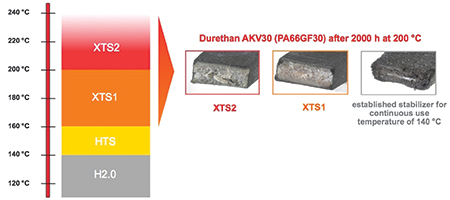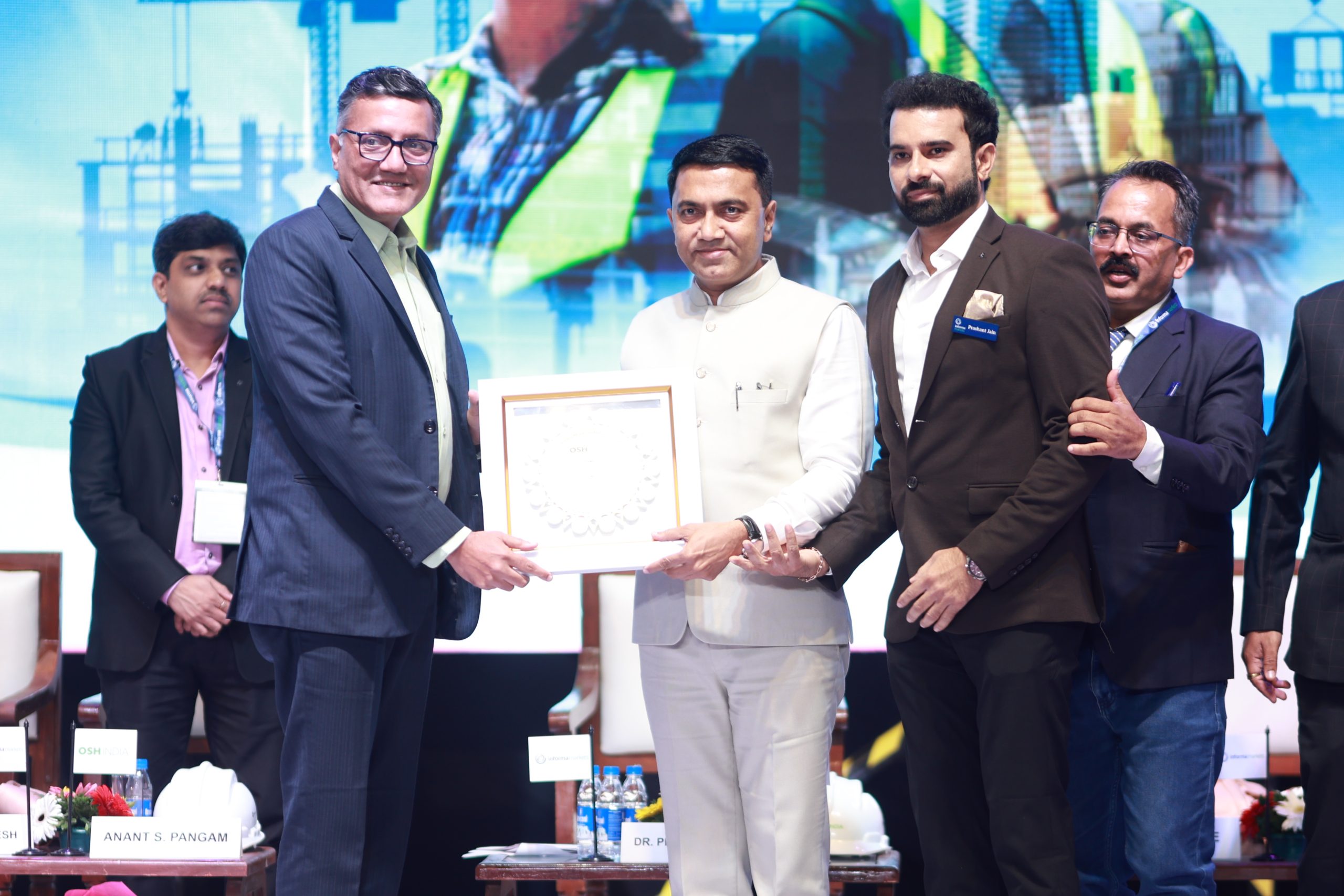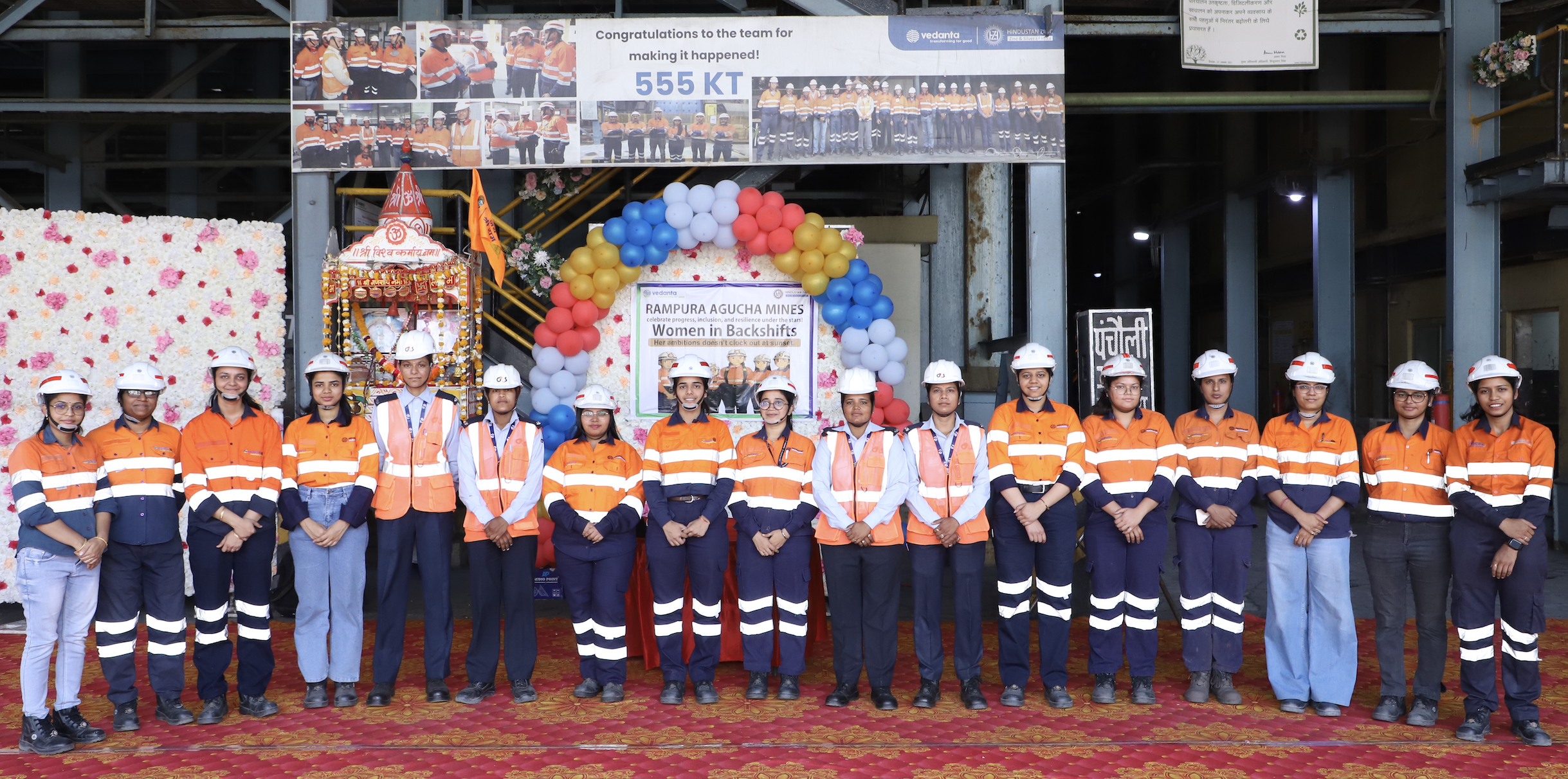 Potential applications for the material in the engine compartment include air tubes, inlet pipes and add-on body parts that are subject to high thermal stresses.
Potential applications for the material in the engine compartment include air tubes, inlet pipes and add-on body parts that are subject to high thermal stresses.
Lanxess, a specialty chemicals company, is launching two new high-tech heat stabilising systems — the XTS1 and XTS2 — for Durethan polyamide products. The XTS1 can withstand longterm service temperatures of upto 200 °C. Potential applications for the material in the engine compartment include air tubes, inlet pipes and add-on body parts that are subject to high thermal stresses. The material grades in the XTS2 range are at a well advanced stage of development. They are designed for hightech applications in the engine compartment that are subject to unusually high temperatures. They have been devised as an alternative to costly heatstabilised specialty thermoplastics such as fully and semi-aromatic polyamides and polyphenylene sulfide and also offer outstanding processing properties. The stabilisers respond to the increase in thermal stress to which plastic parts are subjected to under the vehicle engine hood, a development caused by more efficient combustion engines, which has led to lower fuel consumption and CO2 emissions. The processing capabilities are similar to those of established members of the Durethan BKV range. Thanks to its enhanced flow properties, it can be processed at even lower temperatures, thus enabling reduced cycle times and energy costs. The same is true of other XTS1 grades that are currently being developed. This polyamide is resistant to moisture in processing, while high injection speeds are also no problem. Its excellent flow properties prevent material degradation resulting from excessively high melt temperatures.
Tepex, a Lanxess subsidiary based in the German town of Brilon, makes thermoplastic composite sheets reinforced with continuous fibre manufactured here are sold under this brand name. The family of materials is already used to successful effect in automotive engineering, IT technology, sports equipment and electronics applications. Despite its very low weight, Tepex combines stiffness with strength. In many cases, it is far stronger than steel, aluminum and magnesium, for example.
Tepex has demonstrated that it is ideal for the series production of automotive components. For instance, it is part of the hybrid design of a seat shell for a German automaker’s sports coupé and is also used to impressive effect in the lower beam of the Audi A8’s hybrid front end. What’s more, the series launch of brake pedals and airbag housings based on hybrid technology incorporating Tepex is imminent.
In addition to automotive parts, Tepex is used in items such as the soles of sports shoes, brake levers and pedals for racing bikes, rucksack frames, snowboarding and cycle helmets, and battery housings for smartphones.













Leave a Reply